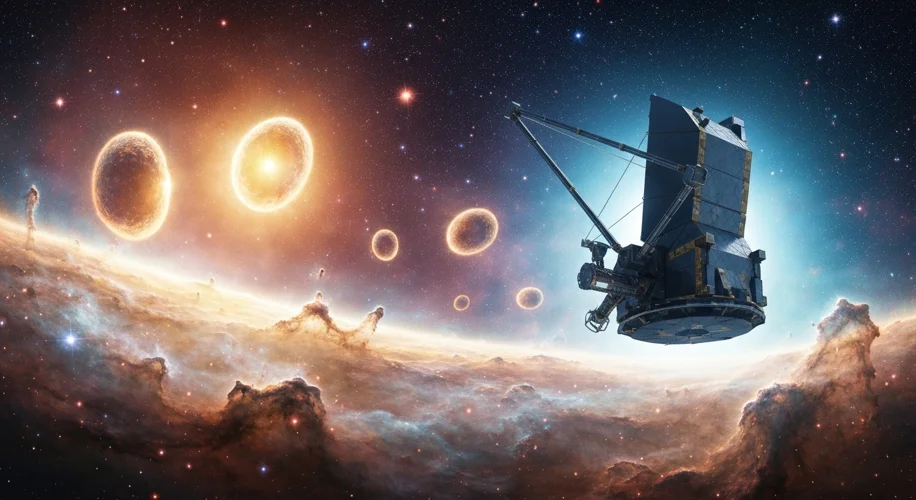Imagine looking out into the night sky and seeing not just the familiar stars and galaxies, but also… something else. Something that doesn’t quite fit our current understanding of how the universe works. That’s exactly what NASA’s James Webb Space Telescope (JWST) has done, recently discovering around 300 mysterious objects in the early universe that, quite frankly, shouldn’t exist according to our existing models.
It’s a bit like discovering a new type of cloud formation that defies everything we know about atmospheric physics. When I first heard about this, my mind immediately went to the parallels with studying our own planet’s climate. We observe patterns, build models, and then sometimes, nature throws us a curveball that makes us rethink everything.
What Did Webb Find?
The JWST, with its incredible infrared vision, is designed to peer further back in time than ever before. It’s looking at the universe when it was just a fraction of its current age. What scientists found were objects that appear to be much more massive and mature than expected for that early cosmic era. Think of finding fully grown redwood trees in a nursery – it’s not what you’d anticipate.
These objects, potentially early galaxies, seem to have formed stars and grown much faster than our theories of cosmic evolution predict. This suggests that either our understanding of how the first stars and galaxies formed is incomplete, or there’s a fundamental piece of the cosmic puzzle we’re missing.
Why is This a Big Deal?
This discovery isn’t about disproving everything we know, but rather about refining it. Science is a journey of continuous discovery. Every new piece of information, especially surprising ones, pushes the boundaries of our knowledge. For me, it highlights how much we still have to learn about the vastness of space, much like how much we’re still uncovering about Earth’s complex climate systems.
These unexpected findings from Webb encourage scientists to revisit their theories and perhaps develop new ones. It’s a reminder that the universe is full of wonders, and our current models are just our best approximations so far. The early universe was a chaotic, dynamic place, and perhaps the processes of star and galaxy formation were more varied and rapid than we imagined.
What’s Next?
More observations and data analysis are, of course, needed. Scientists will be scrutinizing these objects, trying to confirm their nature and properties. It’s a thrilling time for astronomy. Discoveries like these are what fuel scientific curiosity and drive innovation. They remind us that the quest to understand our universe is ongoing, full of surprises, and incredibly exciting.
It’s a humbling thought, isn’t it? That even with our most advanced tools, the universe still has so much mystery to reveal. I, for one, can’t wait to see what else the Webb Telescope helps us uncover.

